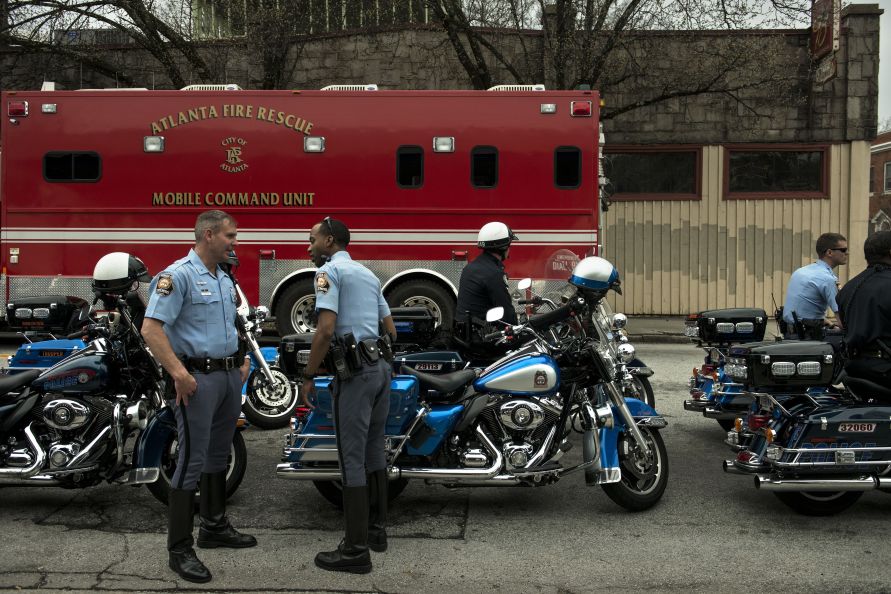Understanding Emergency Numbers And Their Role In Public Safety
In times of uncertainty, individuals often rely on emergency services for support. The inquiry "why do people call police 12" might appear simple, but it carries significant implications. Delving into why individuals reach out to emergency numbers such as "12" is essential for understanding the pivotal role of law enforcement and emergency responders in society. These calls often signify moments of crisis, urgency, and the need for swift assistance. They represent a lifeline for citizens during their most vulnerable moments.
Emergencies encompass a wide range of situations, from criminal activities to natural disasters, and the police are central to addressing these challenges. While the number "12" may not be universally recognized as an emergency line, in certain regions, it serves as a critical resource for people in distress. This article explores the reasons behind calling the police and examines the functioning of emergency response systems, emphasizing their importance in maintaining public safety.
By analyzing the motivations behind these calls and the mechanisms in place to manage them, we can enhance the effectiveness of communication between citizens and law enforcement agencies. This understanding is crucial for improving public safety and ensuring that emergency services are utilized responsibly and efficiently.
- Unveiling The Remarkable Life Of Erin Perrine Age Height And Achievements
- Exploring The Phenomenon Of Alana Cho Onlyfans
Table of Contents
- The Evolution of Emergency Numbers
- Motivations Behind Calling the Police
- Categorizing Calls to Police
- The Structure of Emergency Response Systems
- The Multifaceted Role of Police in Emergencies
- Enhancing Public Awareness
- Key Insights from Emergency Call Statistics
- Addressing the Misuse of Emergency Services
- Exploring Global Variations in Emergency Numbers
- Emerging Trends in Emergency Response
The Evolution of Emergency Numbers
The concept of emergency numbers emerged in the early 20th century, coinciding with advancements in communication technology. Initially, emergency calls were directed to local police stations or fire departments. However, as urbanization accelerated, the need for a centralized system became evident. The introduction of the "999" emergency number in London in 1937 marked a pivotal moment in the development of public safety infrastructure.
In some regions, the number "12" has been adopted as an emergency line, particularly in countries where international standards like "911" or "112" are not widely used. This variation highlights the unique challenges and resources available in different parts of the world. Examining the historical context of emergency numbers provides deeper insights into their evolution and significance.
Key Milestones in Emergency Communication
- 1937: London pioneers the "999" emergency number.
- 1968: The United States establishes "911" as its national emergency number.
- 1991: The European Union adopts "112" as the standard emergency number across member states.
Motivations Behind Calling the Police
People contact the police for a variety of reasons, ranging from immediate threats to public safety to seeking assistance in non-emergency scenarios. The decision to dial an emergency number like "12" is often driven by the urgency of the situation and the need for professional intervention. Understanding the underlying motivations for these calls is crucial for optimizing emergency response systems and ensuring timely assistance.
- Exploring Luke Bryans Political Stance Is He A Trump Supporter
- Dr Patrick Mbatha A Beacon Of Excellence In Global Healthcare
Primary Reasons for Calling the Police
- Reporting ongoing criminal activities, such as thefts, assaults, or burglaries.
- Requesting help during natural disasters, accidents, or other emergencies.
- Seeking support for medical emergencies when other services are unavailable.
- Addressing domestic violence or other threats to personal safety.
Categorizing Calls to Police
Emergency calls to police can be classified into several categories, each requiring a tailored response strategy. These categories include criminal incidents, traffic accidents, missing persons, and public disturbances. By analyzing the nature of these calls, law enforcement agencies can allocate resources more effectively, enhance response times, and improve overall public safety.
Categories of Emergency Calls
- Criminal Incidents: Reports of burglaries, assaults, thefts, and other illegal activities.
- Traffic Accidents: Collisions, hit-and-run incidents, road hazards, and other traffic-related emergencies.
- Missing Persons: Reports of lost individuals, particularly children or elderly individuals who may require immediate attention.
- Public Disturbances: Noise complaints, fights, protests, and other disruptions to public order.
The Structure of Emergency Response Systems
Emergency response systems are designed to ensure rapid and efficient handling of calls to numbers like "12." These systems involve a network of operators, dispatchers, and first responders who work collaboratively to address various types of emergencies. The effectiveness of these systems depends on advanced technology, comprehensive training, and optimal resource allocation.
Components of Emergency Response Systems
- Call centers equipped with cutting-edge communication technology to ensure seamless communication.
- Dispatchers trained to assess the severity of emergencies and allocate resources effectively.
- First responders, including police officers, firefighters, and paramedics, who are prepared to act swiftly and decisively.
The Multifaceted Role of Police in Emergencies
Police officers are instrumental in emergency response, serving as the first line of defense against threats to public safety. Their responsibilities extend beyond traditional law enforcement duties to include community service and crisis management. By recognizing the diverse nature of their roles, we can appreciate the critical contributions they make to society.
Key Responsibilities of Police in Emergencies
- Maintaining public order during chaotic situations, such as protests or natural disasters.
- Investigating crimes and gathering evidence at the scene to ensure justice is served.
- Providing support to other emergency services, such as fire departments and medical teams, to ensure a coordinated response.
Enhancing Public Awareness
Public awareness campaigns are vital for educating citizens about the appropriate use of emergency numbers like "12." By promoting responsible behavior, these campaigns help reduce the misuse of emergency services and ensure that resources are allocated to genuine emergencies. Effective communication strategies, such as community outreach programs and social media campaigns, play a pivotal role in raising awareness.
Strategies for Promoting Awareness
- Conducting workshops and seminars in schools and community centers to educate individuals about emergency protocols.
- Utilizing social media platforms to disseminate information about emergency procedures and the importance of responsible usage.
- Collaborating with local organizations to distribute educational materials and engage with diverse communities.
Key Insights from Emergency Call Statistics
Data and statistics provide valuable insights into the frequency and nature of emergency calls. Recent studies indicate that a substantial percentage of calls to numbers like "12" are related to criminal incidents, while others involve traffic accidents or public disturbances. Analyzing this data helps law enforcement agencies identify trends, allocate resources effectively, and develop strategies to enhance their response capabilities.
Statistical Highlights
- Approximately 60% of emergency calls are related to criminal activities, underscoring the importance of law enforcement in addressing public safety concerns.
- Traffic accidents account for 20% of all calls, emphasizing the need for robust traffic management and accident response systems.
- Public disturbances and noise complaints make up the remaining 20%, highlighting the role of police in maintaining order and resolving community conflicts.
Addressing the Misuse of Emergency Services
While emergency numbers like "12" are designed to provide critical assistance, they are sometimes misused by individuals seeking non-emergency help or engaging in prank calls. This misuse diverts resources from genuine emergencies and undermines the effectiveness of emergency response systems. Addressing this issue requires a combination of education and enforcement measures to promote responsible usage.
Consequences of Misuse
- Delayed response times for legitimate emergencies, potentially endangering lives.
- Increased workload for dispatchers and first responders, leading to burnout and reduced efficiency.
- Potential legal consequences for individuals making prank calls, reinforcing the importance of responsible behavior.
Exploring Global Variations in Emergency Numbers
Emergency numbers vary significantly across different countries, reflecting regional preferences and technological capabilities. While some regions use numbers like "12" as their primary emergency line, others have adopted international standards such as "911" or "112." Understanding these differences is essential for travelers and expatriates who may need to access emergency services in unfamiliar environments.
Examples of Global Emergency Numbers
- United States: "911" for police, fire, and medical emergencies, ensuring a unified response system.
- European Union: "112" as the standard emergency number, facilitating access to emergency services across member states.
- Some Asian countries: "12" for police-related emergencies, reflecting regional adaptations to emergency communication systems.
Emerging Trends in Emergency Response
As technology continues to advance, emergency response systems are poised for significant transformations. Innovations such as artificial intelligence, real-time data analytics, and mobile applications are expected to enhance the efficiency and effectiveness of these systems. By embracing these advancements, law enforcement agencies can better serve their communities and address emerging challenges in public safety.
Emerging Technologies in Emergency Response
- AI-powered call analysis to prioritize urgent cases and allocate resources more effectively.
- Real-time GPS tracking for faster response times and improved coordination among first responders.
- Mobile apps enabling citizens to report emergencies with multimedia evidence, enhancing the accuracy and speed of emergency responses.
Conclusion
The question "why do people call police 12" underscores the critical role of emergency numbers in ensuring public safety. By exploring the motivations behind these calls and the mechanisms in place to handle them, we can appreciate the importance of effective communication between citizens and law enforcement agencies. As emergency response systems continue to evolve, they must adapt to meet the demands of an increasingly complex and interconnected world.
We encourage readers to share this article with others and engage in discussions about the responsible use of emergency numbers. Together, we can foster a safer and more informed community. For more information on related topics, explore our other articles on public safety and emergency preparedness.



Detail Author:
- Name : Maye Kohler DDS
- Username : lemke.stephany
- Email : xgerlach@dach.com
- Birthdate : 1971-06-14
- Address : 339 Kallie Alley Suite 290 Lake Marquisland, MS 46978-9118
- Phone : +1-209-514-6074
- Company : Bednar and Sons
- Job : Bus Driver
- Bio : Possimus quos sed molestias. Quae ipsum eum dolor voluptatum minus est iste. Qui fugit provident dolores suscipit vero fugit eius.
Socials
tiktok:
- url : https://tiktok.com/@christiansen1975
- username : christiansen1975
- bio : Voluptas sunt dolorem et.
- followers : 817
- following : 2707
instagram:
- url : https://instagram.com/lauriane8023
- username : lauriane8023
- bio : Sunt repellat molestiae suscipit quod. Sed odit est modi et incidunt.
- followers : 2466
- following : 2602
facebook:
- url : https://facebook.com/lauriane_dev
- username : lauriane_dev
- bio : Enim exercitationem ad minus distinctio dolore eos dolorum.
- followers : 1256
- following : 12
linkedin:
- url : https://linkedin.com/in/laurianechristiansen
- username : laurianechristiansen
- bio : Fuga a quas excepturi. Et quia est eum ut.
- followers : 2422
- following : 1791